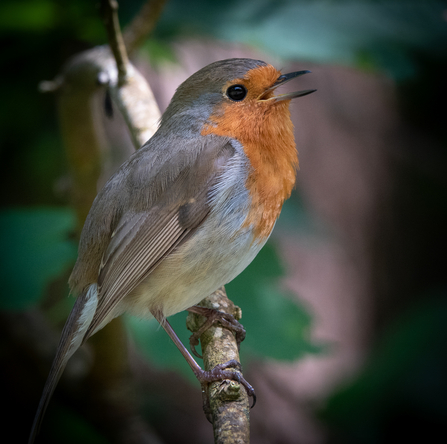A constant presence in our gardens and local green spaces, adult robins are instantly recognisable by their red breast with many tales from folklore of how they acquired their colourful feathers. The red colour features in its scientific name, Erithacus rubecula, and in many languages such as robin goch in Welsh, rouge-gorge in French, and el petirrojo in Spanish.
If orange had been recognised as a colour at an earlier point in history, I wonder if robins would have been called something else?
Their association with Christmas cards is thought to be inspired by Victorian postmen dressed in their red uniforms, who were nicknamed ‘robins’.






